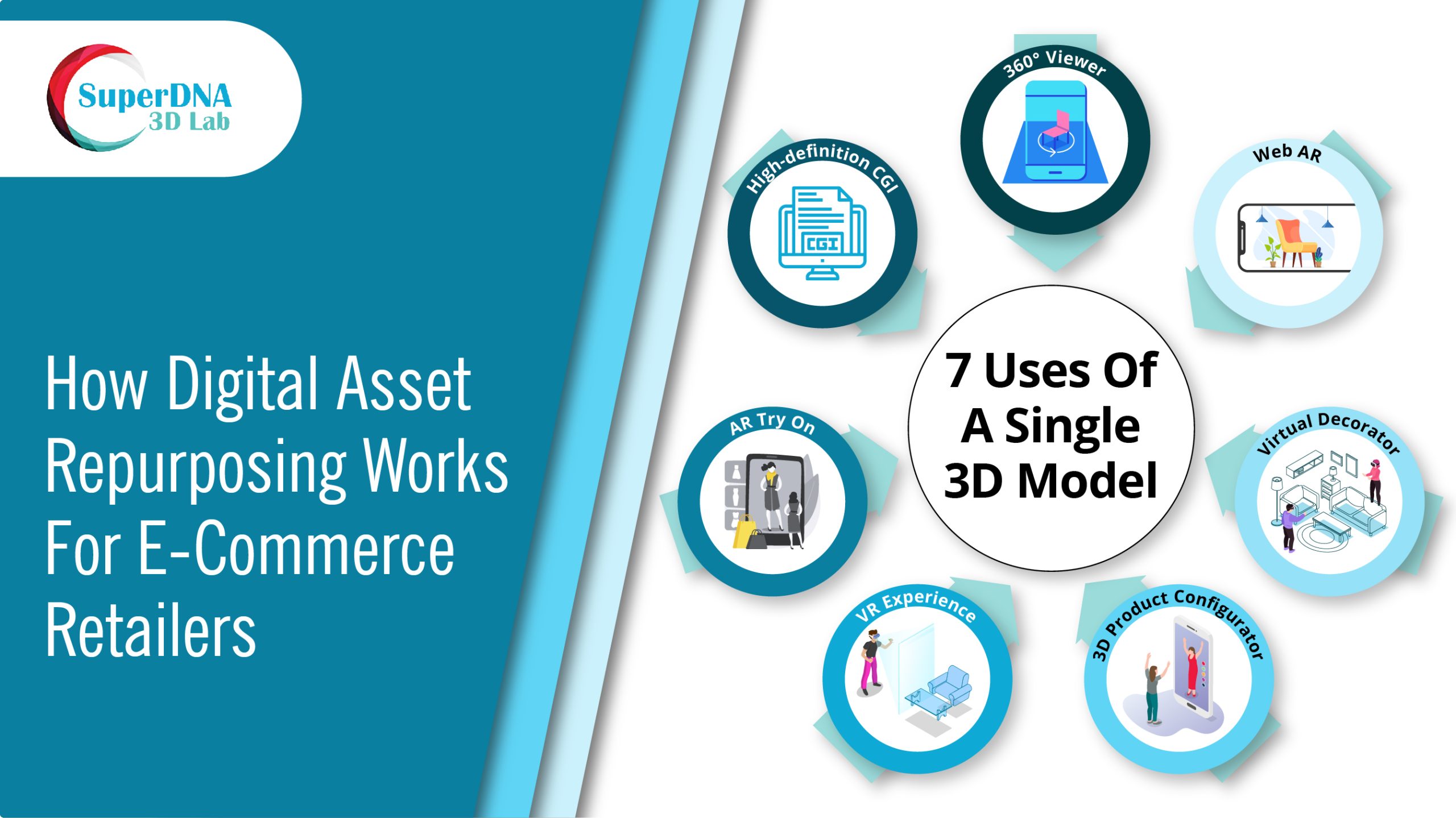
E-Commerce retailers do not have to go for traditional product photography anymore. They do not have to drain out their working capital on just one function. As a manufacturer or retailer, you must understand how 3D modeling and rendering help you overcome this cost. 3D models are created once in your product life cycle and can be used forever and everywhere. How?
- 360°Viewer
This is a very lightweight and easily manageable plugin that can be embedded into your website. It allows your users to view the 3D visual representation of your furniture, footwear, and dress, from every angle. The user can rotate the product, zoom in, and zoom out and also have a clear look inside the product to understand its construction better.
- Web AR
Web-based AR is a very interactive method of marketing that uses the same 3D model in a web AR application. It requires a smartphone and a proprietary app or a stand-alone 3D model. The user can project the 3D AR element anywhere in their space such as their worktable, living area, bedroom or walls.
- Virtual Decorator
Furniture manufacturers and suppliers use virtual decorators to allow their customers to project 3D models of their sofas, chairs, beds, recliners, and several other furniture pieces onto their real environment using their smartphones. They can redecorate their space virtually without having to move any of their furniture pieces.
- 3D Product Configurator
3D product configurators are one of the most incredible services out there. It uses the same high-quality 3D model with the only difference being that the user can modify that model according to their preferences. The configurator itself can be embedded into a website and it allows for several features such as changing the color, proportions, style, material, texture, and various components of the product.
- VR Experience
Virtual reality is a virtual world that is created with several three-dimensional objects, videos, and imagery. It makes use of several sensory elements that enable a totally immersive experience for the user. It is still in its development phases but a great example of the same is car racing games that use virtual reality headsets. You must’ve heard of Oculus Rift, Samsung Gear VR, HTC Vive, and many more.
- AR Try On
AR try-on applications are highly suitable for both the fashion and furniture sectors. Once you are done creating 3D assets for your products, you can deploy them using your business app or various E-comm websites. Your consumers can project these dresses, furniture pieces, and accessories onto their real environment which facilitates a virtual “try-on”.
- High-definition CGI
Computer-generated imagery serves to create lifestyle images and interactive content. Such services help you come up with some of the most reliable, realistic, and result-oriented CGI that can be used for interior designing and decorative purposes. CGI gives your customers ample details about your fashion and furniture pieces in real-life settings that convince them to purchase from your brand faster.
Conclusion
One 3D model can be used across multiple platforms without having to start from scratch. The same model can be modified and redesigned to look like a completely different product as well. This is why we say, “build once and use everywhere forever”. For more information on this, feel free to connect with SuperDNA 3D Lab.